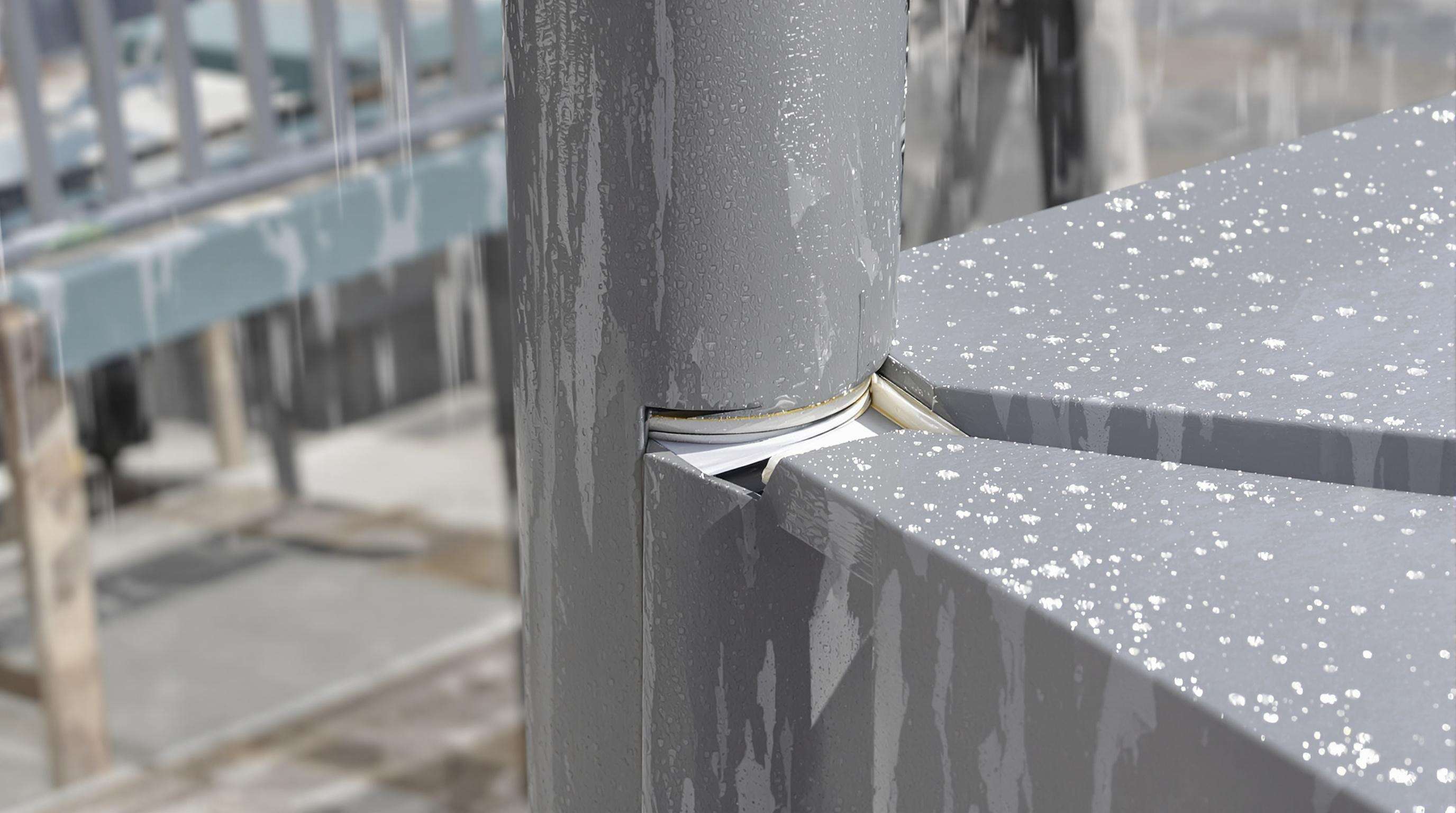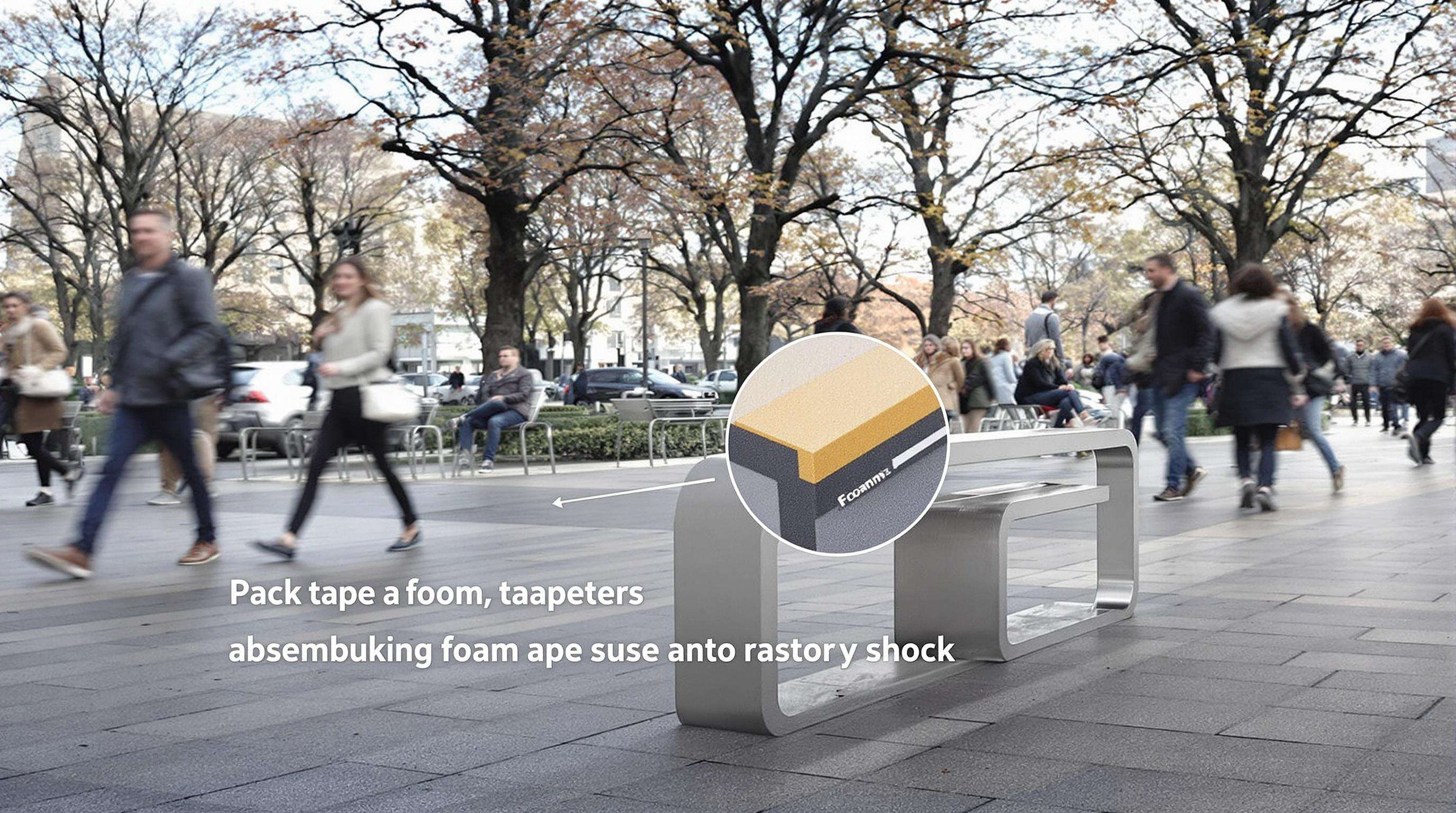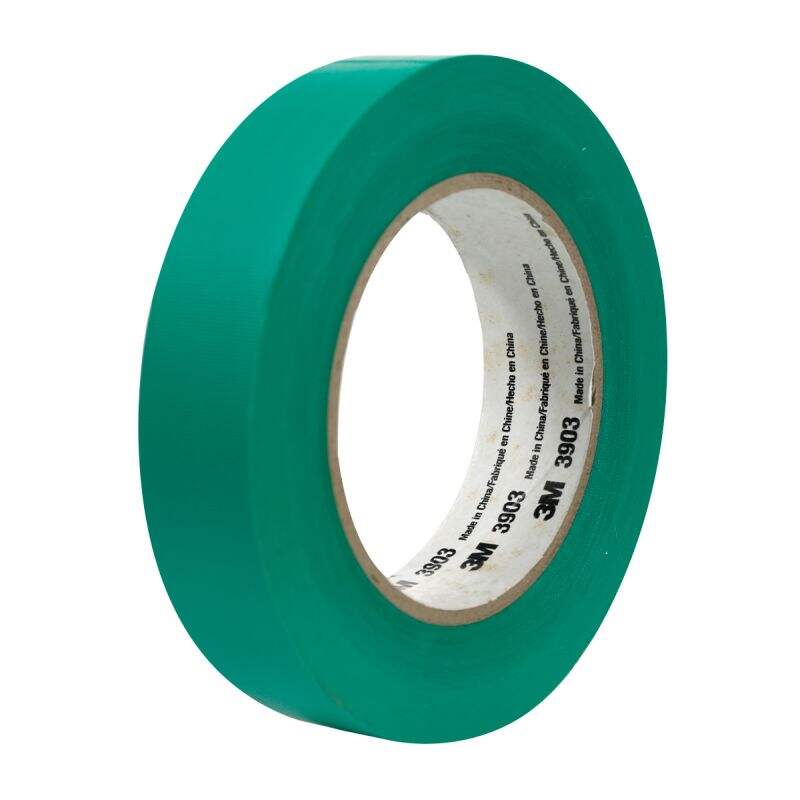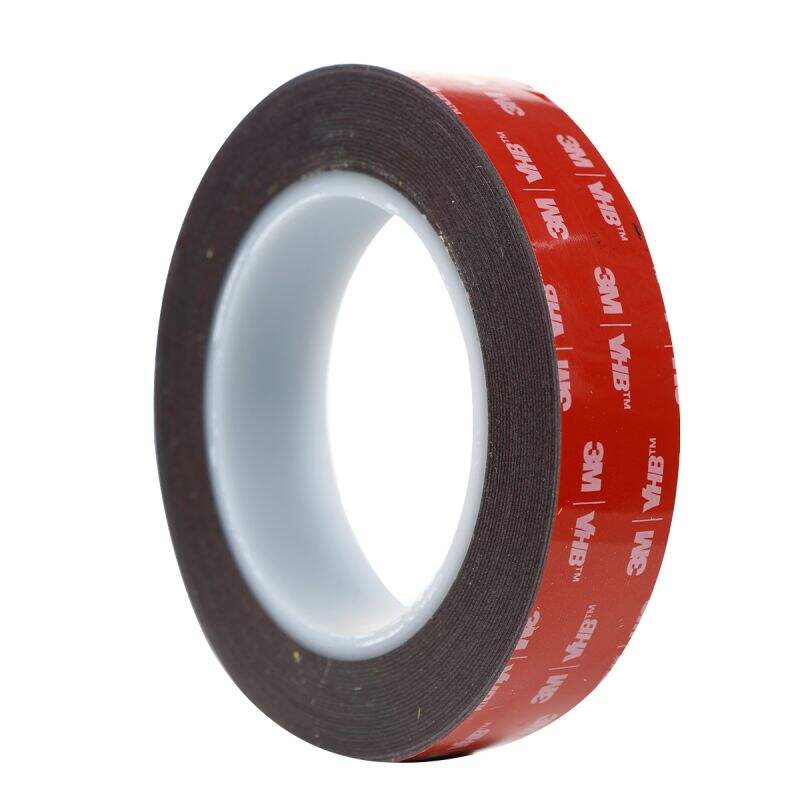เทปโฟมกันน้ำสองหน้าช่วยเพิ่มความทนทานของเฟอร์นิเจอร์กลางแจ้งได้อย่างไร
บทบาทของเทปสองหน้าในกระบวนการประกอบเฟอร์นิเจอร์กลางแจ้งที่มีความทนทานและไร้รอยต่อ
เหตุใดอุตสาหกรรมจึงเปลี่ยนจากการใช้ชิ้นส่วนยึดกลไกมาเป็นการประกอบด้วยกาวเป็นหลัก
ผู้ผลิตเฟอร์นิเจอร์กลางแจ้งมากขึ้นและมากขึ้น เทปเคลือบสองด้าน แทนการใช้สกรู รีเวท หรือเทคนิคการเชื่อมโลหะ รายงานแนวโน้มการใช้กาวในอุตสาหกรรมล่าสุดจากปี 2024 ยังได้แสดงข้อมูลที่น่าสนใจอย่างมากเช่นกัน: การประกอบชิ้นส่วนโดยใช้กาวมีอัตราการเติบโตเพิ่มขึ้น 34% ในแต่ละปีสำหรับการใช้งานในเฟอร์นิเจอร์เพื่อการพาณิชย์ ทำไมถึงเป็นเช่นนั้น? เนื่องจากวิธีการนี้สามารถลดต้นทุนการผลิตลงได้จริงๆ ประมาณ 40% เมื่อเทียบกับวิธีการยึดชิ้นส่วนแบบกลไกเดิม วิธีการแบบดั้งเดิมจำเป็นต้องเจาะรู ซึ่งก่อให้เกิดจุดที่มีแรงเครียดสะสมในวัสดุ ในทางตรงกันข้าม เทปกาวประสิทธิภาพสูงทำงานแตกต่างออกไป โดยสามารถกระจายแรงกดน้ำหนักได้อย่างสม่ำเสมอทั่วพื้นผิว โดยไม่ลดทอนความแข็งแรง การเปลี่ยนแปลงครั้งนี้มีความหมายสำหรับบริษัทที่ต้องการดำเนินธุรกิจให้เป็นมิตรต่อสิ่งแวดล้อมมากขึ้น เนื่องจากการติดตั้งเทปช่วยลดของเสียจากวัสดุลงได้ประมาณ 18% และเร่งเวลาในการประกอบชิ้นงานให้รวดเร็วขึ้นราวๆ 27% ตัวเลขเหล่านี้มาจากมาตรฐานอุตสาหกรรมยานยนต์ที่ถูกนำไปประยุกต์ใช้กับวิธีการสร้างเฟอร์นิเจอร์กลางแจ้งในปัจจุบัน
วิธีที่เทปสองหน้าช่วยสร้างรอยยึดเกาะที่แข็งแรงและมองไม่เห็นในงานติดตั้งชิ้นส่วนเข้ากับโครง
เทปสองหน้าที่มีกาวอะคริลิกขั้นสูงสามารถสร้างแรงยึดติดที่แข็งแรงมาก รับแรงดึงในแนวตั้งได้มากกว่า 80 ปอนด์ต่อหนึ่งนิ้ว ตามแนวเส้นตรง เทปชนิดนี้ใช้งานได้ดีมากเมื่อต้องติดตั้งกรอบโลหะบนแผงวัสดุคอมโพสิต เพราะยึดติดได้โดยไม่ต้องใช้อุปกรณ์เสริมใด ๆ สิ่งที่ทำให้เทปเหล่านี้มีประโยชน์มากคือการออกแบบแกนโฟมแบบเซลล์ปิด ซึ่งสามารถเติมเต็มพื้นผิวที่ไม่สม่ำเสมอได้ลึกประมาณ 0.8 มิลลิเมตร ช่วยป้องกันไม่ให้น้ำซึมเข้าไปในบริเวณข้อต่อที่มักจะเกิดปัญหา ตัวยึดแบบดั้งเดิมเคยเป็นจุดที่นักออกแบบปวดหัวเสมอ เพราะสกรูและน็อตไม่เพียงแต่ดูไม่สวยงาม แต่ยังมีแนวโน้มที่จะเกิดสนิมตามกาลเวลา ทางเลือกในการใช้เทปช่วยรักษารูปลักษณ์ที่เรียบง่ายและต่อเนื่องตามที่เราต้องการ พร้อมทั้งหลีกเลี่ยงรอยร้าวเล็ก ๆ ที่เกิดขึ้นในระหว่างการเจาะรู การทดสอบภาคสนามยังได้เปิดเผยข้อมูลที่น่าประทับใจอีกด้วย นั่นคือ จุดเชื่อมต่อที่ยึดด้วยกาวระหว่างอลูมิเนียมและวัสดุ HDPE ยังคงรักษาความแข็งแรงไว้ได้ถึงเกือบ 98% ของค่าเดิม แม้จะผ่านการเปลี่ยนแปลงอุณหภูมิถึง 500 รอบ จากอุณหภูมิ -20 องศาฟาเรนไฮต์ ไปจนถึง 120 องศาฟาเรนไฮต์ ซึ่งประสิทธิภาพในระดับนี้เหนือกว่าข้อต่อยึดแบบรีเวทถึงเกือบสองในสามในกรณีส่วนใหญ่ จากการศึกษาล่าสุด
กรณีศึกษา: แบรนด์เฟอร์นิเจอร์สนามเชิงพาณิชย์ลดการใช้สกรูยึดลงได้ถึง 40%
ผู้ผลิตเฟอร์นิเจอร์รายใหญ่รายหนึ่งได้เปลี่ยนสกรูสแตนเลสประมาณสองในสามของจำนวนทั้งหมดเป็นเทป VHB ความหนา 2 มม. เทปโฟม สำหรับรุ่นเฟอร์นิเจอร์สนามชั้นนำของบริษัท หลังจากดำเนินการเปลี่ยนแปลงนี้มาเป็นเวลาสามปีเต็ม บริษัทสามารถลดการใช้ชิ้นส่วนโลหะได้ปีละประมาณ 1.2 ตัน พร้อมกับได้รับการป้องกันสนิมที่ดีขึ้นเมื่อเก้าอี้เหล่านี้ถูกนำไปใช้ในพื้นที่ใกล้แหล่งน้ำเค็ม เมื่อตรวจสอบสภาพหลังการติดตั้ง พบว่าไม่มีรอยต่อใดๆ ที่เสียหายเลยในเก้าอี้ที่ใช้เทปในการยึดติด เมื่อเทียบกับเก้าอี้ที่ใช้สกรูยึดแบบทั่วไปซึ่งพบว่ามีรอยต่อหลวมประมาณ 12 จุดต่อทุกๆ 100 จุด นอกจากนี้ ทีมประกอบยังประหยัดเวลาการผลิตได้ประมาณ 22 นาทีต่อเก้าอี้ 1 ตัว ซึ่งหมายความว่าสามารถผลิตสินค้าได้เพิ่มขึ้นถึง 18 เปอร์เซ็นต์โดยไม่ต้องขยายพื้นที่โรงงานเพิ่มเติม
ความทนทานต่อสภาพอากาศของเทปโฟมอะคริลิกในสภาพแวดล้อมภายนอกที่รุนแรง

ความท้าทาย: แสง UV ฝน และการเปลี่ยนแปลงอุณหภูมิที่ทำให้กาวแบบดั้งเดิมเสื่อมสภาพ
กาวติดตั้งเฟอร์นิเจอร์กลางแจ้งต้องเผชิญกับปัญหาใหญ่ 3 ประการพร้อมกัน ประการแรก แสงแดดจะสลายตัวเคมีในกาวออกเป็นทีละน้อยตามระยะเวลา ต่อมาคือปัญหาน้ำซึมเข้าไปในช่องว่างเล็กๆ ระหว่างชิ้นงาน ซึ่งอาจทำให้เกิดความเสียหายได้ อย่าลืมถึงการขยายตัวและหดตัวของวัสดุที่เกิดขึ้นเมื่ออุณหภูมิเปลี่ยนแปลงจากคืนที่หนาวเย็นจัดไปจนถึงวันที่ร้อนระอุในฤดูร้อน ตามการทดสอบของอุตสาหกรรมบางอย่าง พบว่ากาวที่ทำจากยางธรรมชาติแบบทั่วไปมักจะเสียแรงยึดเกาะไปถึงสองในสามภายในหนึ่งปี หากถูกแสง UV กระทบตลอดเวลา เมื่อน้ำเข้าไปอยู่ในเนื้อวัสดุ จะทำให้วัสดุบิดงอเสียรูป ส่วนการเปลี่ยนแปลงของอุณหภูมิที่รุนแรงล่ะ? มันทำให้กาวที่แห้งแข็งแตกออกและหลุดออกจากชิ้นงานที่ควรจะยึดติดไว้
ทางแก้: โฟมอะคริลิกให้ความต้านทานความชื้นและ UV ในระยะยาว
เทปสองหน้าที่ใช้แกนโฟมอะคริลิกสามารถแก้ปัญหาเหล่านี้ได้ด้วยนวัตกรรม 3 อย่าง:
- สูตรเคมีที่ทนต่อแสง UV : โพลิเมอร์ที่เชื่อมโยงขวางสามารถต้านทานการสลายตัวของโมเลกุล แม้จะผ่านการทดสอบรังสี UV เร่งความเร็วเป็นเวลา 5,000 ชั่วโมง (ASTM G154)
- โครงสร้างเซลล์ปิด : ความหนาแน่นของโฟม 15-25 ปอนด์/ลูกบาศก์ฟุต สร้างเกราะป้องกันความชื้น ทำให้ค่าการซึมผ่านของไอน้ำอยู่ที่ 0.01 กรัม/100 ตารางนิ้ว/วัน
- คุณสมบัติแบบวิสโคเอลาสติก : โฟมสามารถดูดซับความเครียดจากความร้อนได้ถึง 90% ผ่านการฟื้นตัวจากการอัดตัว รักษาความสมบูรณ์ของพันธะในช่วงอุณหภูมิ -40°F ถึง 200°F
กรณีศึกษา: เฟอร์นิเจอร์ร้านอาหารริมชายหาดยังคงยึดเกาะได้หลังผ่านการทดสอบพ่นเกลือเป็นเวลา 3 ปี
การประเมินผลในปี 2023 ของชุดโต๊ะอาหารริมทะเลจำนวน 200 ชุดที่ใช้เทปโฟมอะคริลิก พบว่า:
- 0% ของการเสียหายของกาว แม้จะมีการสัมผัสพ่นเกลือทุกวัน
- ลดการเกิดสนิมลง 93% เมื่อเทียบกับข้อต่อที่ยึดด้วยสกรู
- ค่าใช้จ่ายในการบำรุงรักษาเฉลี่ยลดลง 120 ดอลลาร์/หน่วยต่อปี
เปรียบเทียบ: อะคริลิกกับซิลิโคนในการใช้งานกลางแจ้งที่มีรังสี UV สูง
| คุณสมบัติ | เทปโฟมอะคริลิก | แผ่นซิลิโคน |
|---|---|---|
| ความต้านทานต่อรังสี UV | 10 ปีขึ้นไป (ไม่เหลือง 0%) | 3-5 ปี (ผิวแตกร้าว) |
| การกันความชื้น | 0.003 กรัม/ตารางเมตร/ต่อวัน | 0.15 กรัม/ตารางเมตร/ต่อวัน |
| ช่วงอุณหภูมิ | -40°F ถึง 200°F | -20°F ถึง 150°F |
| ความเข้ากันได้ของวัสดุรองรับ | โลหะ, วัสดุคอมโพสิต, PVC | ใช้ได้เฉพาะพื้นผิวที่ไม่ดูดซับของเหลว |
ข้อมูลภาคสนามยืนยันว่า ผลิตภัณฑ์อะคริลิกมีความทนทานต่อสภาพชายฝั่งทะเลได้ดีกว่าทางเลือกที่ใช้ซิลิโคนรองหลังถึง 3 เท่า ทำให้อะคริลิกเป็นวัสดุที่เหมาะกว่าสำหรับการประกอบชุดเฟอร์นิเจอร์กลางแจ้งถาวร
เพิ่มความทนทานของโครงสร้างด้วยเทปโฟมดูดซับการสั่นสะเทือน

ปัญหา: การใช้งานหนักเร่งให้เกิดความเสียหายที่ข้อต่อของเฟอร์นิเจอร์กลางแจ้ง
เฟอร์นิเจอร์สำหรับใช้กลางแจ้งในพื้นที่สาธารณะและเฟอร์นิเจอร์สำหรับพื้นที่เชิงพาณิชย์ต้องรับแรงกระทำซ้ำๆ กว่าพันครั้งต่อปี จากการใช้งานของผู้คนและสภาพแวดล้อม การยึดด้วยสกรูทำให้เกิดรอยร้าวเล็กๆ ในวัสดุ เช่น เหล็กเคลือบผงและพลาสติก HDPE โดยมีข้อมูลจากการจำลองการสึกหรอของอุตสาหกรรมระบุว่า 74% ของการเสียหายก่อนวัยเกิดขึ้นที่จุดยึดติดตั้ง
หลักการทำงาน: แกนโฟมแบบเซลล์ปิดช่วยดูดซับแรงกระแทกและป้องกันการแตกร้าว
เทปสองหน้าชั้นพร้อมแกนโฟมแบบไวสโคเอลาสติกทำหน้าที่เป็นตัวกันกระแทกเชิงกล สามารถดูดซับพลังงานจากการกระแทกได้สูงถึง 90% ก่อนที่จะไปถึงข้อต่อโครงสร้าง รายงานวัสดุลดการสั่นสะเทือนปี 2025 แสดงให้เห็นว่าโฟมเซลล์ปิดสามารถลดความเข้มข้นของแรงเค้นได้มากกว่ากาวแบบแข็ง 52% ในแอปพลิเคชันที่ต้องรับน้ำหนัก
กรณีศึกษา: ที่นั่งในสวนสาธารณะแบบใช้เทปโฟมมีอายุการใช้งานยาวนานกว่าแบบยึดด้วยสกรูถึง 50%
เมืองชายฝั่งแห่งหนึ่งเปลี่ยนจากการใช้ตัวยึดเชิงกลไปใช้เทปโฟมอะคริลิกหนา 2 มม. กับที่นั่งจำนวน 120 ตัว ซึ่งต้องรับผู้ใช้งานมากกว่า 450 คนต่อวัน หลังจากผ่านไป 3 ปี ที่นั่งที่ยึดด้วยเทปยังคงสภาพความแข็งแรงสมบูรณ์ ขณะที่ 31% ของที่นั่งแบบประกอบด้วยสกรูจำเป็นต้องซ่อมแซมเนื่องจากข้อต่อแยกหรือวัสดุแตกหัก
แนวทางปฏิบัติที่ดีที่สุด: การเลือกความหนาของเทปที่เหมาะสมเพื่อกระจายแรงกด
- รับน้ำหนักเบา (1 มม.): โต๊ะข้าง (<100 ปอนด์)
- รับน้ำหนักปานกลาง (1.5 มม.): เก้าอี้รับประทานอาหาร (100-300 ปอนด์)
-
รับน้ำหนักหนัก (2 มม.): ที่นั่งเชิงพาณิชย์ (300 ปอนด์)
โฟมที่หนาขึ้นช่วยกระจายแรงได้ดีขึ้น ลดแรงกดสูงสุดบนพื้นผิวที่ยึดติดกันได้มากถึง 68%
การป้องกันและปกป้องเฟอร์นิเจอร์จากความชื้น การบิดงอ และการกัดกร่อน
ข้อต่อแบบปิดผนึกด้วยเทปสองหน้าช่วยป้องกันการซึมผ่านของน้ำได้อย่างไร
สกรูและรีเวททั่วไปมักทิ้งช่องว่างเล็กๆ ระหว่างพื้นผิวที่ทำให้น้ำซึมผ่านเข้ามาในระยะยาว เทปสองหน้าสามารถแก้ปัญหานี้ได้โดยการสร้างการปิดผนึกที่เป็นหนึ่งเดียวครอบคลุมพื้นที่ข้อต่อทั้งหมดโดยไม่มีจุดอ่อน เทปมีโฟมพิเศษด้านในทำจากอะคริลิกที่ป้องกันน้ำได้แม้อุณหภูมิจะเปลี่ยนแปลงและวัสดุจะขยายตัวหรือหดตัว เมื่อทดสอบจริง เฟอร์นิเจอร์ที่ปิดผนึกด้วยเทปชนิดนี้ยังคงคุณสมบัติกันน้ำได้ประมาณ 98% หลังจากถูกน้ำฝนเทียมกระหน่ำต่อเนื่องเป็นเวลา 500 ชั่วโมง ซึ่งถือว่าดีเยี่ยมเมื่อเทียบกับตัวยึดแบบดั้งเดิมที่มีประสิทธิภาพเพียงประมาณ 18% ภายใต้เงื่อนไขการทดสอบเดียวกันตามผลการทดลองในห้องแล็บ
การป้องกันการเสื่อมสภาพของวัสดุ: บทบาทของกาวที่ทนต่อสภาพอากาศในด้านความทนทานยาวนาน
กาวอะคริลิกคุณภาพสูงสามารถต้านทานสิ่งต่าง ๆ ที่มักจะทำให้กาวเสื่อมสภาพได้ตามเคมีวิทยา เช่น รังสีอัลตราไวโอเลต (UV) หรืออากาศเค็มในพื้นที่ชายฝั่งทะเล รวมถึงการเปลี่ยนแปลงของระดับความชื้นที่เกิดขึ้นซ้ำ ๆ สิ่งที่ทำให้กาวชนิดนี้พิเศษคือ ความสามารถในการยึดติดกับพื้นผิวในระดับโมเลกุล ซึ่งช่วยป้องกันไม่ให้น้ำซึมเข้าไปใต้ผิวและก่อให้เกิดปัญหา เช่น สนิมบนชิ้นส่วนโลหะ หรือเน่าเสียในชิ้นส่วนไม้ งานวิจัยในอุตสาหกรรมบางชิ้นบ่งชี้ว่า เมื่อผู้ผลิตเฟอร์นิเจอร์เปลี่ยนมาใช้กาวกันน้ำชนิดทันสมัยนี้ ผลิตภัณฑ์ของพวกเขามีแนวโน้มที่จะบิดงอได้น้อยลงถึงสองในสาม และเกิดการกัดกร่อนลดลงประมาณครึ่งหนึ่ง หลังจากใช้งานไปถึงห้าปี เมื่อเทียบกับวิธีการประกอบแบบเดิม นอกจากนี้ ยังมีอีกประเด็นที่ควรกล่าวถึง คือ กาวสมัยใหม่เหล่านี้ช่วยลดปัญหาของรอยร้าวเล็ก ๆ ที่เกิดขึ้นรอบ ๆ บริเวณตะปูหรือสกรูตามระยะเวลาที่ใช้งานไป ซึ่งเป็นสาเหตุหลักประการหนึ่งที่ทำให้โครงสร้างเริ่มเสื่อมสภาพในระยะยาว
คำถามที่พบบ่อยเกี่ยวกับเทปสองหน้าในกระบวนการประกอบเฟอร์นิเจอร์กลางแจ้ง
เหตุใดเทปสองหน้าจึงได้รับความนิยมมากกว่าตัวยึดแบบกลไกสำหรับเฟอร์นิเจอร์กลางแจ้ง?
เทปสองหน้าได้รับความนิยมเนื่องจากช่วยลดต้นทุนการผลิต ลดของเสีย และทำให้กระบวนการประกอบมีความรวดเร็วมากยิ่งขึ้น นอกจากนี้ยังให้การยึดเกาะที่แข็งแรงและไร้รอยต่อ ซึ่งมีความทนทานต่อสภาพแวดล้อม ในขณะที่สกรูหรือรีเวทอาจเกิดสนิมหรือหลวมตามกาลเวลา
เทปสองหน้ามีสมรรถนะเป็นอย่างไรภายใต้สภาพอากาศที่รุนแรง?
เทปเหล่านี้ถูกออกแบบมาพร้อมแกนโฟมอะคริลิกที่ทนทานต่อการเสื่อมสภาพจากแสง UV ความชื้น และการเปลี่ยนแปลงของอุณหภูมิ ซึ่งได้รับการพิสูจน์แล้วว่าสามารถรักษาความแข็งแรงในการยึดเกาะได้ภายใต้สภาพแวดล้อมที่หลากหลาย ตั้งแต่ความเย็นจัดไปจนถึงความร้อนสูงมาก ทำให้มีความน่าเชื่อถือสูงสำหรับการใช้งานกลางแจ้ง
ข้อดีของการใช้เทปโฟมที่ช่วยดูดซับแรงสั่นสะเทือนคืออะไร?
เทปโฟมดูดซับการสั่นสะเทือนช่วยลดแรงกดบนข้อต่อโดยการดูดซับพลังงานจากการกระแทก สิ่งนี้ทำให้โครงสร้างเฟอร์นิเจอร์มีอายุการใช้งานที่ยาวนานขึ้น โดยลดปัญหาความเสียหายก่อนวัยที่มักเกิดขึ้นบริเวณจุดยึดติดแบบเดิม
ความหนาของเทปมีผลต่อการกระจายแรงในกระบวนการประกอบเฟอร์นิเจอร์อย่างไร
ความหนาของเทปมีความสำคัญต่อการกระจายแรง โฟมเทปที่หนาขึ้นสามารถกระจายแรงน้ำหนักได้อย่างมีประสิทธิภาพมากขึ้นบนพื้นผิวที่ถูกยึดติด ซึ่งช่วยลดแรงดันจุดสูงสุด และเพิ่มความทนทานของเฟอร์นิเจอร์
Recommended Products
 Hot News
Hot News
-
คณะผู้แทนทางธุรกิจจากปากีสถานเยี่ยมชมโรงงานของเรา และปิดดีลความร่วมมือด้วยการชำระเงินมัดจำทันที
2025-04-29
-
ทีม TAPE ชนะภูเขาฟีนิกซ์เชียงใหม่: ความสามัคคี ความทะเยอทะยาน และความสูงใหม่ในปี 2025
2025-02-21
-
บทบาทของเทปไฟฟ้าพอลิยมิดในระบบประกันไฟฟ้า
2025-01-21
-
เทปสองด้านความแข็งแรงสูง เพื่อการผูกมัดอย่างปลอดภัย
2025-01-15
-
เทปฟองทนทานสําหรับการใช้งานที่มีประสิทธิภาพสูง
2025-01-10
-
เทปป้องกันความร้อนสูง ทนต่ออุณหภูมิสูง สําหรับสภาพที่รุนแรง
2025-01-01






